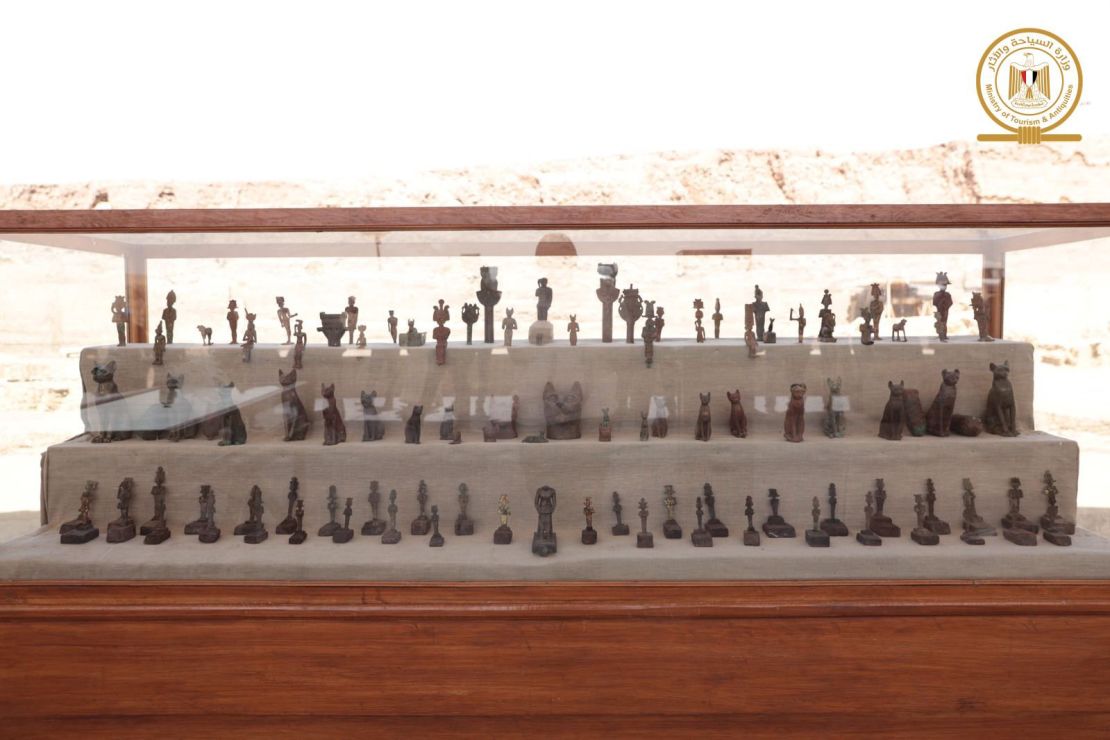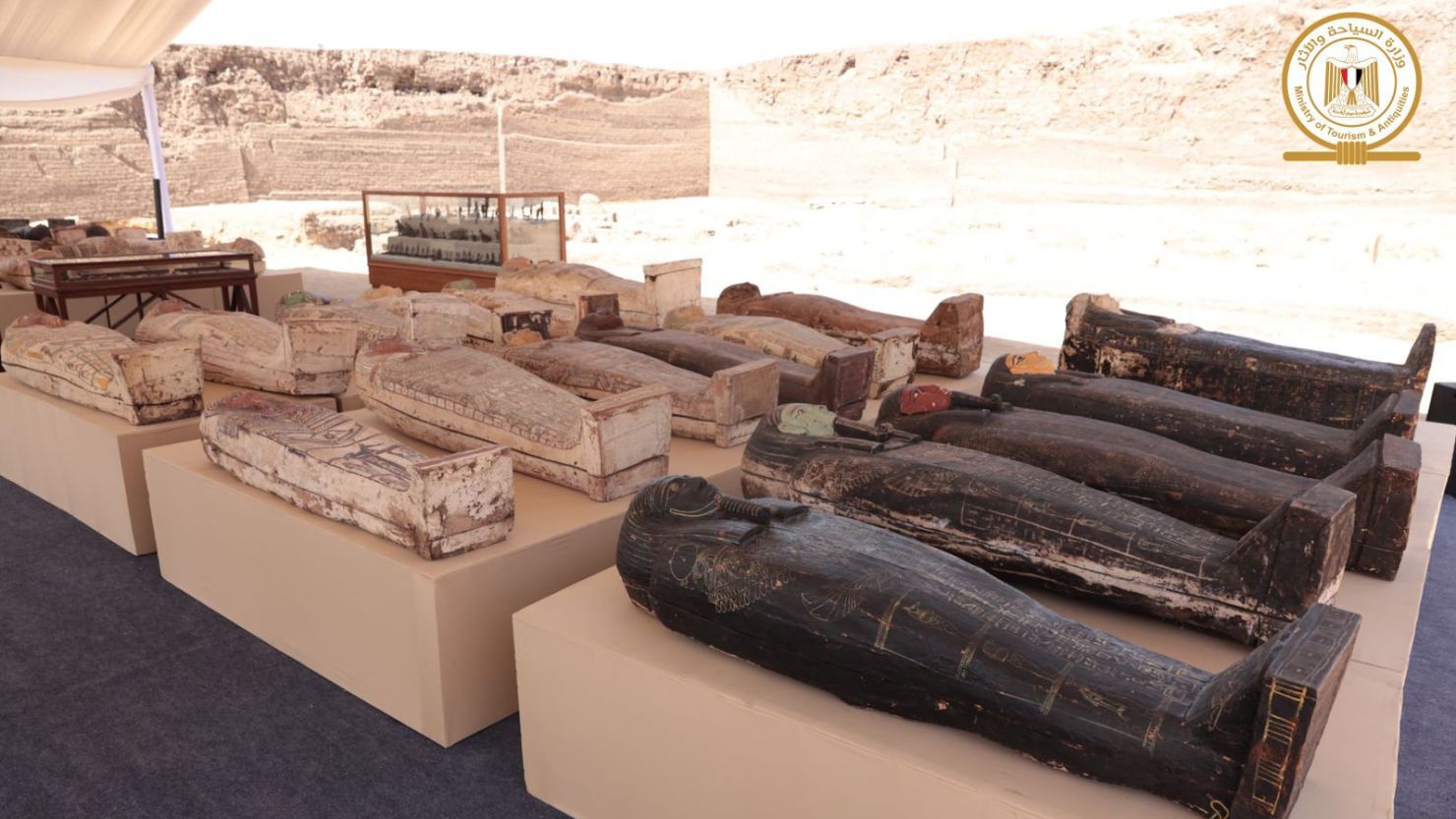A large trove of ancient bronze statues and well-preserved sarcophagi discovered in Egypt’s Saqqara were revealed to the public on Monday, the Egyptian Ministry of Tourism and Antiquities said in a statement.
Archaeologists had discovered relics belonging to Egyptian dynasties buried in the Saqqara necropolis in the past, but the latest find marks the first and largest unearthing of bronze statues in the area from the Late Period, or the 5th century BC.
The 150 statues discovered were modeled after pharaonic gods – including the protector of graves, Anubis; the god of creation of day, Nefertem; and the god of the sun and air, Amun.
They were uncovered by an Egyptian archaeological mission working since 2018 in the area, which lies 18 miles south of Cairo.

The archaeologists also found bronze pots, believed to have been used during prayer rituals for the goddess of fertility, Isis, the statement said.
Another 250 colored, wooden sarcophagi with well-preserved mummies, wooden statues, wooden masks with gold-colored paint and dozens of cat figurines were discovered by the mission.
The mission also found a cache of New Kingdom-era discoveries dating back to the 15th century BC, including a bronze mirror, bracelets, necklaces, earring and anklets.
Photographs released by the ministry showed highly detailed bronze statues and coffins on display for the public in Saqqara.
Top image: Colored sarcophagi discovered in Egypt’s Saqqara were revealed to the public on Monday. (Egypt Ministry of Antiquities)



